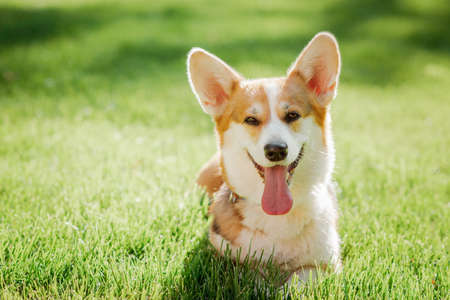1. Understanding the Importance of Basic Commands
Teaching your dog basic commands such as “sit,” “stay,” and “come” is much more than just a fun trick; it’s an essential part of responsible pet ownership in the United States. These foundational commands help ensure your dog’s safety, enhance their well-being, and make it easier for them to become a well-mannered member of both your family and your community. In American neighborhoods, parks, and public spaces, dogs are expected to behave in ways that are safe for themselves and others. Knowing basic commands can prevent dangerous situations—like running into traffic or approaching unfamiliar animals—and allow for smoother interactions with people and pets alike.
| Command | Purpose | Real-Life Example |
|---|---|---|
| Sit | Helps your dog focus, prevents jumping on guests | Greeting visitors at home without chaos |
| Stay | Keeps your dog in place when needed | Waiting calmly at a crosswalk or during vet visits |
| Come | Recalls your dog back to you for safety | Calling your dog away from hazards at the park |
Mastering these simple instructions builds trust between you and your dog, making daily routines—like walks, family gatherings, and trips to pet-friendly stores—more enjoyable for everyone. In the U.S., where dogs often accompany their owners on errands or outings, having control through basic commands is not just convenient but often required by local regulations and leash laws. By investing time in teaching these commands early on, you’re setting up your furry companion for a lifetime of happiness and harmony within American society.
2. Getting Ready: Setting Up for Successful Training
Before you start teaching your dog basic commands like sit, stay, and come, its important to set yourself and your pup up for success. Creating an ideal training environment, gathering the right supplies, and setting realistic expectations can make a huge difference in how quickly and effectively your dog learns.
Creating the Right Environment
Choose a quiet place in your home or backyard where your dog won’t be distracted by noises, other pets, or people coming and going. Consistency is key—try to use the same spot for training sessions at first so your dog learns to focus on you.
Essential Supplies for Training
Having the right tools on hand makes training smoother and more enjoyable for both you and your dog. Here’s a quick checklist:
| Item | Purpose |
|---|---|
| Treats | Motivate and reward good behavior; choose small, soft treats that are easy to eat quickly. |
| Leash & Collar/Harness | Maintain control and safety during lessons, especially outdoors. |
| Clicker (optional) | A clicker can help mark the exact moment your dog does something right for clearer communication. |
| Favorite Toy | Add fun to training or use as an extra reward. |
| Poo Bags | Always clean up after your pet during outdoor sessions. |
Setting Realistic Expectations
Remember, every dog is different—some breeds pick up commands faster than others, and individual personalities matter too. Keep sessions short (5-10 minutes), upbeat, and end on a positive note. It may take several sessions before your dog fully understands each command, so patience is essential. Celebrate small successes along the way!
![]()
3. Teaching Your Dog to Sit
One of the first and most essential commands American dog owners teach is “sit.” This basic cue not only helps manage your dogs behavior in daily life but also sets the foundation for more advanced training. Here’s a step-by-step guide, using positive reinforcement, to help your pup master the sit command.
Step-by-Step Guide to Teaching “Sit”
| Step | Description |
|---|---|
| Step 1: Get Your Dogs Attention | Start in a quiet environment with minimal distractions. Hold a small, tasty treat close to your dog’s nose to capture their attention. |
| Step 2: Lure into Position | Slowly move the treat upwards and slightly back over your dogs head. As their nose follows the treat, their bottom will naturally lower into a sitting position. |
| Step 3: Say “Sit” | As soon as your dog’s hindquarters touch the ground, clearly say “sit.” Timing is key so they associate the word with the action. |
| Step 4: Reward Immediately | Give your dog the treat and offer lots of praise (“Good sit!”). Positive reinforcement encourages them to repeat the behavior. |
| Step 5: Repeat and Practice | Practice several short sessions each day. Gradually add distractions and practice in different locations to generalize the command. |
| Step 6: Fade Out Treats | Once your dog reliably sits on cue, reduce treats and reward randomly while continuing verbal praise and affection. |
Troubleshooting Common Issues
- If your dog jumps up: Lower the treat closer to their nose and slow down your movement.
- If your dog backs away: Practice against a wall so they can’t back up further.
- If your dog doesn’t respond: Try higher-value treats or work in a less distracting space.
Tip:
Avoid repeating the command multiple times—say it once and wait for a response. Consistency is important in American dog training culture. Make training fun and end sessions on a positive note for the best results!
4. Mastering Stay for Better Control
Teaching your dog to “stay” is one of the most valuable skills for both safety and everyday household manners, especially in busy American neighborhoods and public spaces. A reliable “stay” command can prevent your dog from dashing out the front door, running into traffic, or causing disruptions when guests arrive. Here’s a breakdown of simple, effective methods to train your dog to stay put, ensuring peace of mind at home and on outings.
Step-by-Step Guide to Teaching “Stay”
| Step | Description | Common Scenarios in the U.S. |
|---|---|---|
| 1. Start with “Sit” | Ask your dog to sit first, as it’s easier for them to remain still from a sitting position. | Before opening the front door for deliveries or guests. |
| 2. Add the “Stay” Cue | With your palm facing your dog, say “stay” in a clear, calm voice. | At parks before letting them off-leash in designated areas. |
| 3. Increase Duration Gradually | Begin with just a few seconds, then reward. Slowly build up time as your dog improves. | During family meals or when you need your dog to wait quietly at home gatherings. |
| 4. Introduce Distance and Distractions | Take small steps back while asking your dog to stay, and practice with mild distractions (TV, kids playing). | On sidewalks, near playgrounds, or at outdoor cafés where distractions are common. |
| 5. Use the Release Word | Teach a release word like “okay” or “free,” signaling that your dog can move again. | After waiting at crosswalks or when it’s safe to greet new people/pets. |
Tips for Success
- Consistency is key: Practice daily in short sessions rather than occasional long ones.
- Praise and rewards: Always use treats or favorite toys to reinforce good behavior, especially early on.
- Avoid scolding: If your dog breaks the stay, calmly guide them back without punishment to keep training positive.
- Real-life practice: Use real scenarios like waiting at doors, sidewalks, and during family events to make training relevant.
The Importance of “Stay” in Everyday American Life
The “stay” command is more than just obedience—it’s about keeping your dog safe and well-mannered in environments common across the U.S., such as suburban neighborhoods, apartment complexes, city parks, and community events. Mastering this skill ensures your pet is welcome everywhere and helps foster trust between you and your furry friend.
5. The Come Command: Ensuring Reliable Recall
Teaching your dog to come when called—often referred to as “recall”—is one of the most important commands for American pet owners, especially when enjoying off-leash parks, hiking trails, and other recreational areas across the U.S. A reliable recall can keep your dog safe and give you peace of mind in environments where distractions abound. Here are effective tips and a step-by-step approach to building a strong recall with your dog.
Why Reliable Recall Matters
Whether you’re exploring national parks, spending weekends at dog-friendly beaches, or visiting local leash-free zones, being able to call your dog back instantly is essential. In many U.S. communities, leash laws require off-leash dogs to be under strict voice control, making recall not just a safety tool but also a legal necessity.
Effective Tips for Teaching “Come”
Start Indoors
Begin training in a quiet environment free from distractions. Use a cheerful tone and reward your dog with high-value treats or favorite toys when they respond correctly.
Add Distractions Gradually
Slowly introduce more challenging environments—backyards, then quiet parks, then busier public spaces—to build reliability in real-world situations.
Avoid Negative Associations
Never call your dog to punish them. Always make coming to you a positive experience so they associate the command with good things.
Step-by-Step Recall Training Table
| Step | Description |
|---|---|
| 1. Name Recognition | Get your dogs attention by saying their name before giving the “come” command. |
| 2. Short Distance Practice | Kneel down, open arms, and call “come.” Reward immediately when your dog responds. |
| 3. Increase Distance | Gradually move farther away before calling your dog, always rewarding successful responses. |
| 4. Add Distractions | Practice in new locations with different sights and smells to reinforce the command. |
| 5. Practice with Long Line | Use a long leash for safety while training in open spaces until your dog’s recall is consistent. |
Troubleshooting Common Challenges
- If your dog hesitates or ignores the command, return to an easier environment and increase rewards.
- If recall breaks down during play or excitement, use higher value treats or toys for motivation.
Pro Tip:
In American culture, many pet parents use recall games like hide-and-seek or have friendly competitions at dog parks to keep training fun and engaging.
6. Other Essential Commands: Down, Leave It, and More
Once your dog has mastered the basics like “sit,” “stay,” and “come,” it’s time to build on those skills with additional commands that can make daily life smoother for both you and your pup. These extra commands not only help at home but also prepare your dog for different situations you might encounter in American neighborhoods, parks, or during travel.
Why Teach More Commands?
Expanding your dogs vocabulary helps reinforce good manners and boosts their confidence. It also strengthens your bond by encouraging positive interaction and communication. Here are a few must-have commands beyond the basics:
| Command | Purpose | Common Situations |
|---|---|---|
| Down | Keeps your dog calm and prevents jumping up on people or furniture. | When guests arrive, in cafes, or during vet visits. |
| Leave It | Stops your dog from picking up unsafe or unwanted items. | During walks when encountering trash or dangerous objects. |
| Drop It | Teaches your dog to release whatever is in their mouth. | If they grab shoes, toys, or something hazardous. |
| Wait | Makes your dog pause before moving forward. | At doorways, crosswalks, or getting out of the car. |
| Heel | Keeps your dog walking calmly by your side. | On busy sidewalks or crowded events. |
Training Tips for Success
Consistency: Use the same words and hand signals each time.
Short Sessions: Practice commands in 5-10 minute intervals to keep your dog engaged.
Praise & Rewards: Reward good behavior with treats or affection immediately after they obey.
Cultural Considerations in the U.S.
Many American public spaces require dogs to be well-behaved and under control. Mastering these extra commands ensures you can confidently take your dog into pet-friendly stores, hiking trails, or participate in community events. Remember, a well-trained dog is more welcome wherever you go!
7. Common Challenges and Positive Solutions
Even the most dedicated dog owners in the U.S. encounter obstacles when teaching basic commands like sit, stay, and come. Understanding these typical challenges and knowing how to address them can make a significant difference in your training journey. Below, we outline some common hurdles and offer expert-backed solutions rooted in patience, consistency, and positive reinforcement.
Common Training Challenges for U.S. Dog Owners
| Challenge | Description | Expert Solution |
|---|---|---|
| Short Attention Span | Dogs, especially puppies, may lose focus quickly during training sessions. | Keep sessions brief (5–10 minutes), use high-value treats, and end on a positive note. |
| Distractions at Home or Outdoors | Noises, people, or other animals can interrupt your dog’s learning process. | Start training in a quiet space and gradually introduce distractions as your dog progresses. |
| Inconsistent Commands | Family members using different words or tones can confuse your dog. | Agree on specific commands and ensure everyone uses the same cues consistently. |
| Lack of Motivation | Some dogs are less food- or toy-motivated than others. | Discover what excites your dog—praise, affection, play—and incorporate it into training rewards. |
| Poor Recall (“Come” command issues) | Your dog ignores the “come” command when distracted or off-leash. | Practice recall indoors first, then move outdoors with a long leash; always reward successful returns. |
The Importance of Patience and Consistency
Training takes time—progress may be slow at first, but don’t get discouraged. Dogs learn best through repetition and clear expectations. Stick to a daily routine and celebrate small wins to reinforce positive behaviors. If you feel frustrated, take a break rather than showing anger or impatience; positivity fosters trust and better results.
Using Positive Reinforcement Effectively
Positive reinforcement means rewarding desired behaviors with treats, praise, or play. This approach encourages your dog to repeat those actions without fear. Avoid punishment-based methods; instead, redirect unwanted behaviors gently and reward good choices immediately.
When to Seek Professional Help
If you’re struggling with persistent issues despite consistent effort—such as aggression, extreme fearfulness, or lack of progress—consider reaching out to a certified dog trainer or behaviorist familiar with American pet culture. Professional support can provide personalized strategies tailored to your household’s needs.


